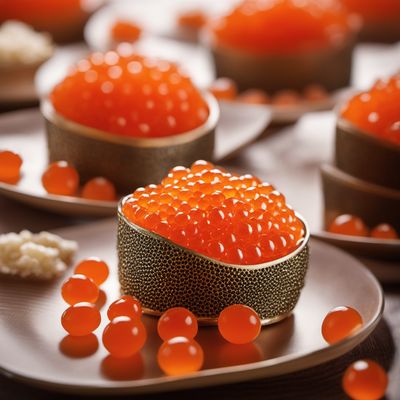
Ingredient
Fish offal
The Hidden Gems: Exploring the Culinary Delights of Fish Offal
Fish offal refers to the internal organs and other edible parts of fish that are often discarded. It includes the liver, roe, cheeks, collars, and other organs. Each part has its own distinct flavor and texture, ranging from rich and creamy to tender and delicate. Fish offal is commonly used in dishes like pâtés, terrines, soups, and stews, where it adds depth and complexity to the overall flavor profile.
Origins and history
The use of fish offal in cooking dates back centuries, with coastal communities around the world making use of every part of the fish to minimize waste. In many cultures, fish offal is considered a delicacy and is often reserved for special occasions or festive meals. It is particularly prominent in Japanese cuisine, where it is used in dishes like ankimo (monkfish liver), shirako (milt), and fugu (pufferfish) offal.
Nutritional information
Fish offal is a rich source of vitamins, minerals, and omega-3 fatty acids. The liver, in particular, is high in vitamin A, vitamin D, and essential fatty acids. The roe is rich in protein, vitamins, and minerals, including iodine and selenium. The specific nutritional content varies depending on the type of fish and the offal being consumed.
Allergens
Fish
How to select
When selecting fish offal, look for parts that are fresh, firm, and have a vibrant color. The liver should be smooth and free from any discoloration or blemishes. The roe should be intact and have a plump, glossy appearance. Avoid offal that has a strong odor, slimy texture, or signs of spoilage. If purchasing from a fish market, ask the fishmonger for recommendations on the freshest offal available.
Storage recommendations
To maintain the freshness of fish offal, it is best to store it in the refrigerator. Wrap the offal tightly in plastic wrap or place it in an airtight container to prevent moisture loss and contamination. Use the offal within 1-2 days of purchase for the best quality and flavor. If freezing, ensure the offal is properly cleaned and wrapped in freezer-safe packaging to avoid freezer burn.
How to produce
Fish offal cannot be produced independently, as it is derived from the internal organs of fish. However, it can be obtained by purchasing whole fish and processing them at home. Consult with local fishmongers or seafood experts for guidance on how to properly clean and prepare fish offal.
Preparation tips
Fish offal can be prepared in various ways, depending on the specific part being used. The liver can be sautéed, grilled, or poached to preserve its creamy texture. The roe can be lightly salted and served as a topping for sushi or incorporated into pasta dishes. Fish cheeks and collars can be grilled or pan-fried for a tender and flavorful experience. Fish offal can also be used to make pâtés, terrines, or fish stock, where it adds depth and complexity to the overall flavor profile.
Culinary uses
Fish offal is commonly used in Japanese cuisine, where it is incorporated into dishes like ankimo (monkfish liver), shirako (milt), and fugu (pufferfish) offal. It is also used in other coastal cuisines around the world, such as Mediterranean and Nordic, where it is valued for its unique flavors and textures. In contemporary cuisine, fish offal is gaining popularity among chefs who embrace nose-to-tail cooking and sustainable practices.
Availability
Japan, Mediterranean countries, Nordic countries


